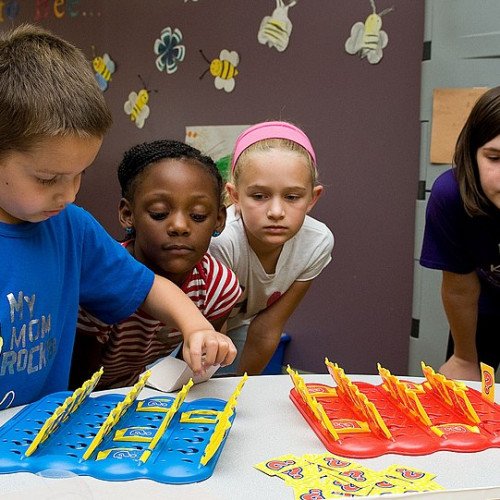BACKGAMMON VS GUESS WHO

BACKGAMMON
Backgammon is one of the oldest known board games. Its history can be traced back nearly 5,000 years to archaeological discoveries in Mesopotamia. It is a two-player game where each player has fifteen pieces (checkers or men) that move between twenty-four triangles (points) according to the roll of two dice. The objective of the game is to be first to bear off, i.e. move all fifteen checkers off the board. Backgammon is a member of the tables family, one of the oldest classes of board games. Backgammon involves a combination of strategy and luck (from rolling dice). While the dice may determine the outcome of a single game, the better player will accumulate the better record over a series of many games. With each roll of the dice, players must choose from numerous options for moving their checkers and anticipate possible counter-moves by the opponent. The optional use of a doubling cube allows players to raise the stakes during the game. Like chess, backgammon has been studied with great interest by computer scientists. Owing to this research, backgammon software such as TD-Gammon has been developed that is capable of beating world-class human players.
Statistics for this Xoptio

GUESS WHO
Guess Who? is a two-player character guessing game created by Ora and Theo Coster, also known as Theora Design, that was first manufactured by Milton Bradley in 1979 and is now owned by Hasbro. It was first brought to the UK by Jack Barr Sr. in 1982. The classic edition is currently being produced by Winning Moves Games USA. Each player starts the game with a board that includes cartoon images of 24 people and their first names with all the images standing up. Each player selects a card of their choice from a separate pile of cards containing the same 24 images. The objective of the game is to be the first to determine which card one's opponent has selected. Players alternate asking various yes or no questions to eliminate candidates, such as: "Does your person wear a hat?" "Does your person wear glasses?" "Is your person a man?" The player will then eliminate candidates (based on the opponent's response) by flipping those images down until only one is left. Well-crafted questions allow players to eliminate one or more possible cards. Special editions which have different faces have been released, including Star Wars, Marvel Comics and Disney. There are smaller, "travel" editions which have only 20 different faces. In 2008 and 2010, extra and mix and match games were released. A computer game based on the series was released in 1999 by Hasbro Interactive. In the United States, advertisements for the board game often showed the characters on the cards coming to life, and making witty comments to each other. This caused later editions of such ads to carry the spoken disclaimer line "game cards do not actually talk" in order to meet Federal Trade Commission advertising guidelines requiring full disclosure of toy features unable to be replicated with the actual product.